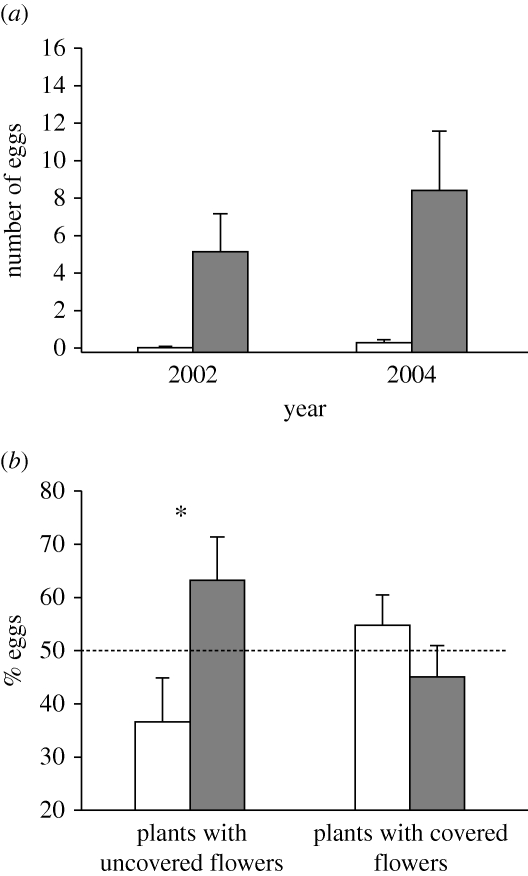Figure 1.
The presence of flowers on D. wrightii plants attracts female M. sexta for oviposition. (a) A D. wrightii plant was examined daily, and the numbers of flowers and M. sexta eggs were recorded and removed. Shown are the number of eggs (mean ± s.e.) in days when the plant had flowers (n = 42 in 2002; n = 15 in 2004) and in days in which the plant did not have flowers (n = 99 in 2002; n = 56 in 2004). The number of flowers in flowering plants was, respectively, 4.16 ± 0.87 and 8.4 ± 3.17 (mean ± s.e.) in 2002 and 2004. White bars, plants without flowers; black bars, plants with flowers. (b) Individual laboratory-reared and mated female M. sexta moths were presented with a plant with a flower and a plant with an odourless paper flower, both uncovered (left, n = 12) or covered (right, n = 14) with transparent plastic bags. Data represent the percentage of eggs (mean ± s.e.) laid on each plant. The asterisk (*) indicates statistically significant differences (sign test, p < 0.05). White bars, plant with a paper flower; black bars, plant with a real flower.

